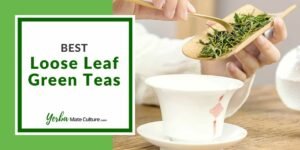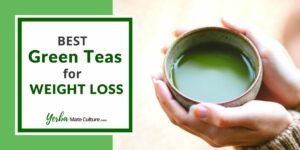One morning a while ago I was at Starbucks thinking if I should order an iced matcha latte or a coffee drink. Then I saw something interesting on the menu — Iced Matcha Espresso Fusion.
I was thinking, can you really mix matcha with coffee?
It was a good decision to order it, as I fell in love with the first sip. This is how I became a regular matcha coffee drinker.
Mornings really shouldn’t be complicated. So, when the coffee versus matcha drama becomes too much to bear, don’t take sides — choose both!
A bold espresso shot dropped into a tall, earthy matcha latte is a rich and creamy eye-opener. Of course, you can also do it the other way around and mix matcha powder into the coffee.
Either way, you’ll taste hints of tea and coffee plus something enticing and unique depending on how you prepare your matcha coffee. It’s a fresh yet familiar experience!
Can You Mix Matcha and Coffee?
Your cup — your rules. So of course you can mix them together!
But the real question is, does it actually taste good?
This depends entirely on your personal preference and what type of matcha and coffee you are using.
I think that matcha lends itself particularly well to most coffee varieties, enhancing their nuances and health benefits.
Usually, I mix matcha with medium or dark-roasted Arabica coffee brewed with a French press (more about this later).
In fact, you can mix and match any tea with your choice of coffee, milk, and sweeteners and come up with all kinds of interesting concoctions.
You might have also heard about dirty chai or yuenyeung — two popular drinks mixing tea and coffee together.
Why Mix Matcha with Coffee?
Here are 3 good reasons to blend your matcha and coffee:
1. Energy Boost
An average 8-ounce cup of coffee contains 95 mg of caffeine — a shot of espresso comes in at 65-90 mg. A teaspoon of matcha powder averages 70 mg.
Combined, a coffee-matcha blend contains twice as much caffeine as the leading energy drink. If you had a long night and need a boost, forget the Red Bull. Nothing gives you wings faster than a French roast-matcha combo!
And unlike some green teas, matcha also contains high levels of L-theanine, an amino acid that alters the effects of caffeine. You’ll feel alert and energized without the inevitable energy crash that follows caffeine consumption.
2. Weight Loss
If you’re trying to shed a few pounds, the extra caffeine can help suppress your appetite and fuel more effective workouts. Combined with the epigallocatechin gallate (EGCG) in matcha, it’s a duo that does wonders when it comes to melting that belly fat.
You’ll burn more calories just sitting at your desk and even more when you hit the gym.
3. Health Benefits
Matcha tea has many health benefits similar to coffee — both contain antioxidants that neutralize the free radicals responsible for inflammation.
The double dose of antioxidants in a coffee-matcha blend makes it a nutritional powerhouse. And it’s not just getting more antioxidants, it’s the combination of different ones in each drink that makes marvels.
With a high amount of EGCG, a catechin with proven anti-cancer properties, matcha has been shown to kill skin, liver, lung, and prostate cancer cells.
How Does it Taste?
Taste is subjective, but I would describe the taste of matcha coffee as rich with both complementary and contrasting flavors.
Of course, this depends very much on how your matcha coffee drink is prepared.
Matcha has a strong taste, so it tends to overpower weak coffees. Combined with a strong brew of dark roast, the flavors meld.
However, the fruity undertones in an Ethiopian blend might disappear entirely, overwhelmed by the grassy punch of the matcha.
But with so many matcha powders and regional coffees available, I encourage you to start with your favorites.
How to Mix Matcha with Coffee?
Here are two delicious ways to blend matcha and coffee:
1. Matcha Latte with Espresso Shot
The first method is to simply add an espresso shot to a hot or iced matcha latte. It’s often called a dirty matcha latte.
This was my first experience trying matcha and coffee mixed together. As I explained earlier, I tried it in Starbucks and enjoyed it a lot!
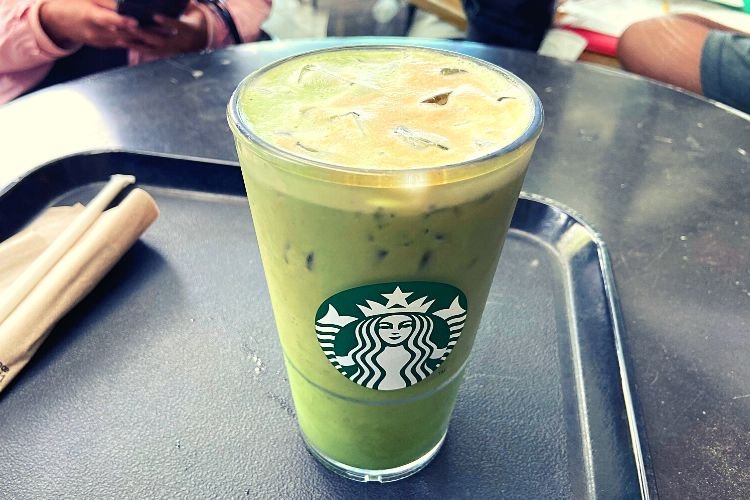
Of all the Starbucks matcha drinks I have tried, this is my favorite one. But instead of ordering one, you can also prepare it at home.
Here is how to make an Iced Matcha Latte with Espresso:
Ingredients:
- 8-12 oz Milk of choice
- 2 tsp Matcha powder
- 1 Espresso shot (or 2 shots)
- Ice cubes
Optional:
- Sweetener (e.g. vanilla syrup, maple syrup, sugar, honey)
Instructions:
- Add milk, matcha powder, and sweetener to a blender. Blend until well mixed and a bit frothy (about 30 seconds to 1 minute).
- Pour into a glass with ice, add a shot of espresso, and enjoy!
This method has two advantages. First, the coffee is strong but not diluted. So you get the flavor of both the matcha and coffee without extra water to wash out the flavor.
It’s also easy to make — if you’re used to pulling espresso shots at home. Preparing both the matcha latte and the espresso as you normally would eliminates tricky adjustments to water content first thing in the morning when you barely know your name. It keeps things simple.
The only problem here is that you need an espresso machine. But you could also use a moka pot or some other brewing method to make strong coffee. If you make the hot version you will also need a milk frother.
Don’t have the equipment? Then just go to Starbucks or get a Dunkin Donuts’ Matcha Latte and ask for an additional espresso shot to be added.
Or check out the next method below — it’s very simple and easy!
2. Coffee with Matcha Powder
The second method is to add matcha powder to hot or iced coffee.
I often brew strong coffee with a French press and save some of it in the refrigerator. So when I want to make some iced coffee with matcha it’s very simple and fast.
First, I just get some of that coffee from the ref plus some matcha powder and ice:
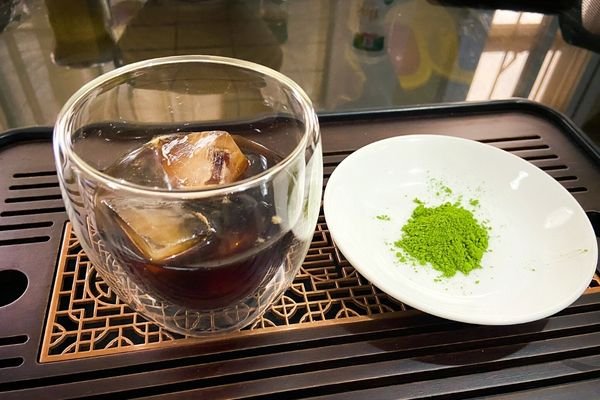
I just put the coffee and matcha on display so that I could take a photo, but actually, you can put them directly into a protein shaker bottle (or blender).
I also like to add a big splash of whole milk to my coffee matcha. But I don’t use any sweeteners.
So after adding the coffee, matcha, milk, and ice into the shaker bottle, I gave it a proper shake and then poured it into a glass.
Here is the result:
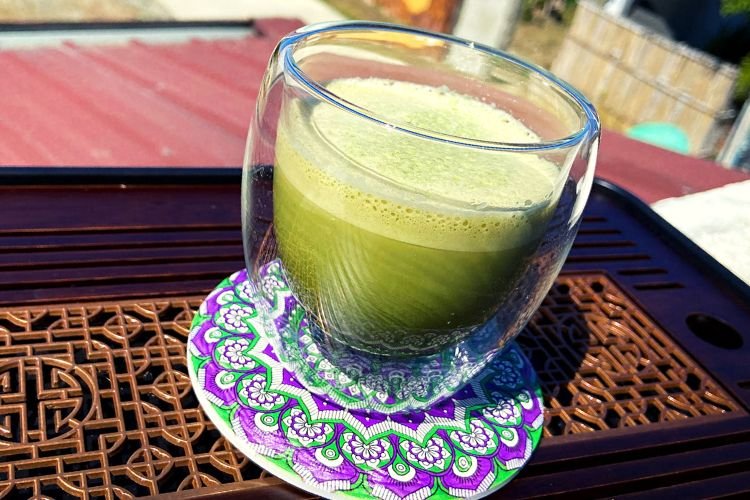
I used high-quality ceremonial grade matcha and dark roast Arabica coffee. It was so delicious and refreshing!
Note that you might have to add more than the usual 1 teaspoon of matcha per 3 ounces of liquid for the fullest flavor — especially in an iced drink — but the amount is easily customizable.
Here is how to make Iced Coffee with Matcha Powder:
Ingredients:
- 4-6 oz Brewed coffee
- 1-2 tsp Matcha powder
- Ice cubes
Optional:
- Milk
- Sweetener
Instructions:
- Add the coffee, matcha powder, and milk (plus sweetener if you want) to a shaker bottle (or blender). Give it a proper shake.
- Pour into a glass and enjoy!
The main advantage of this method is that you don’t need any fancy equipment. In fact, all you need is a shaker bottle and some gear for brewing the coffee.
And one great thing is that matcha powder is dry and portable. Take a tin or pouch with you to work for anytime use.
Tips to Make Matcha Coffee Taste Better?
If you enjoy the energy but not the taste of a matcha-coffee blend, add-ins can completely change its character.
A splash of milk or a dash of cinnamon and nutmeg evens out the flavor. If you think it’s too bitter, add your favorite sweetener as well.
I’m also partial to lattes made with full cream milk — matcha has a creamy quality that only improves when added to dairy.
Plant-based oat or almond milk has a similar texture and an equally smooth taste. You can also try full-fat coconut milk for a velvety finish.
Disadvantages of Mixing Matcha Powder and Coffee
Too much of a good thing can be bad for you. One espresso-matcha drink can contain over 200 mg of caffeine.
That’s already half of the FDA’s recommended limit of 400 mg per day. It’s also more than enough to cause symptoms from anxiety to heart palpitations in people who are sensitive to caffeine.
If you enjoy the flavor of a matcha-coffee blend but not the jitters, have a smaller portion or use decaf coffee for less caffeine (you will still get some from the matcha).
The wrong matcha powder can also give the drink a bitter flavor. The best way to avoid that is to purchase the type of matcha that best suits your taste buds. It’s sold in ceremonial and culinary grades — culinary grade is higher quality and more expensive.
Ceremonial grade matcha powder is bright green with a full-bodied but mellow taste. I prefer this type of matcha because it’s not too bitter and often has some pleasant sweet notes.
Culinary grade matcha is a deep, dull green with a robust and somewhat bitter taste that’s better for baking — the intense flavor is balanced by the sugar in pastries. But combined with bitter coffee, bitter matcha may be unpalatable even with milk and sugar.
So my recommendation is to try a ceremonial grade matcha first.
Final Thoughts on Combining Coffee and Matcha
Why settle for someone else’s idea of a morning pick-me-up when you can create a custom buzz by blending matcha and coffee?
Two favorites in one cup equal a new way to do mornings!
I also really like having an iced coffee with milk and some matcha on a hot afternoon — that’s what will keep me going until all the work is done.
Post a comment below and tell me what’s your favorite matcha coffee drink.
Save on Pinterest:
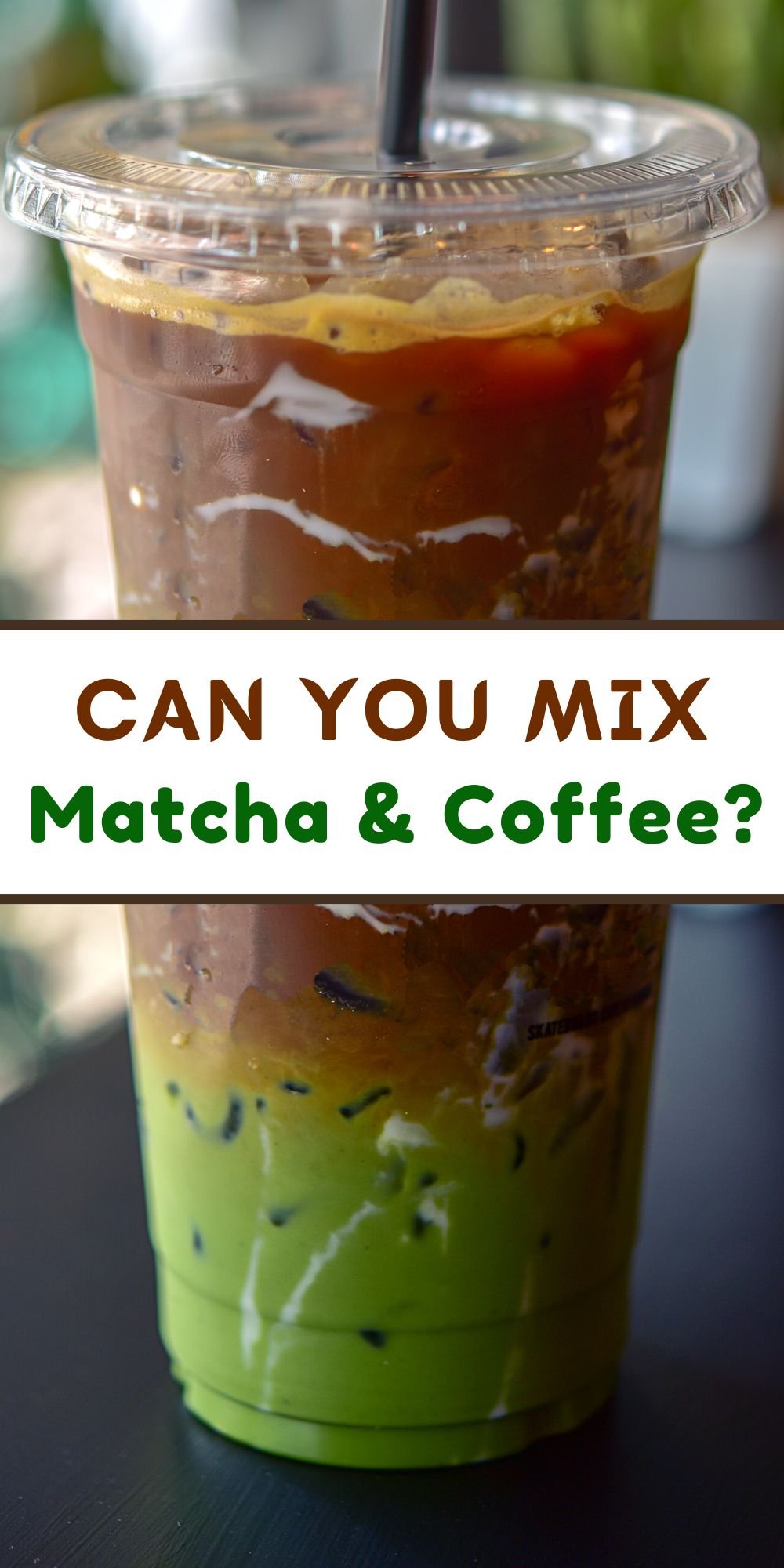

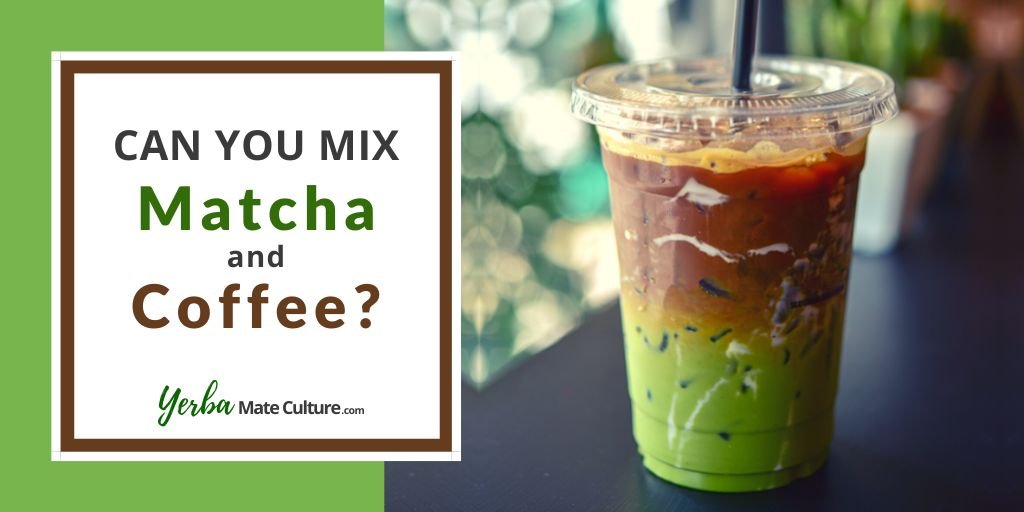
![Trader Joe's Matcha Green Tea Latte [REVIEW] Trader Joe's Matcha Green Tea Latte Review](https://yerbamateculture.b-cdn.net/wp-content/uploads/2023/09/Trader-Joes-Matcha-Green-Tea-Latte-Review-300x150.jpg)
